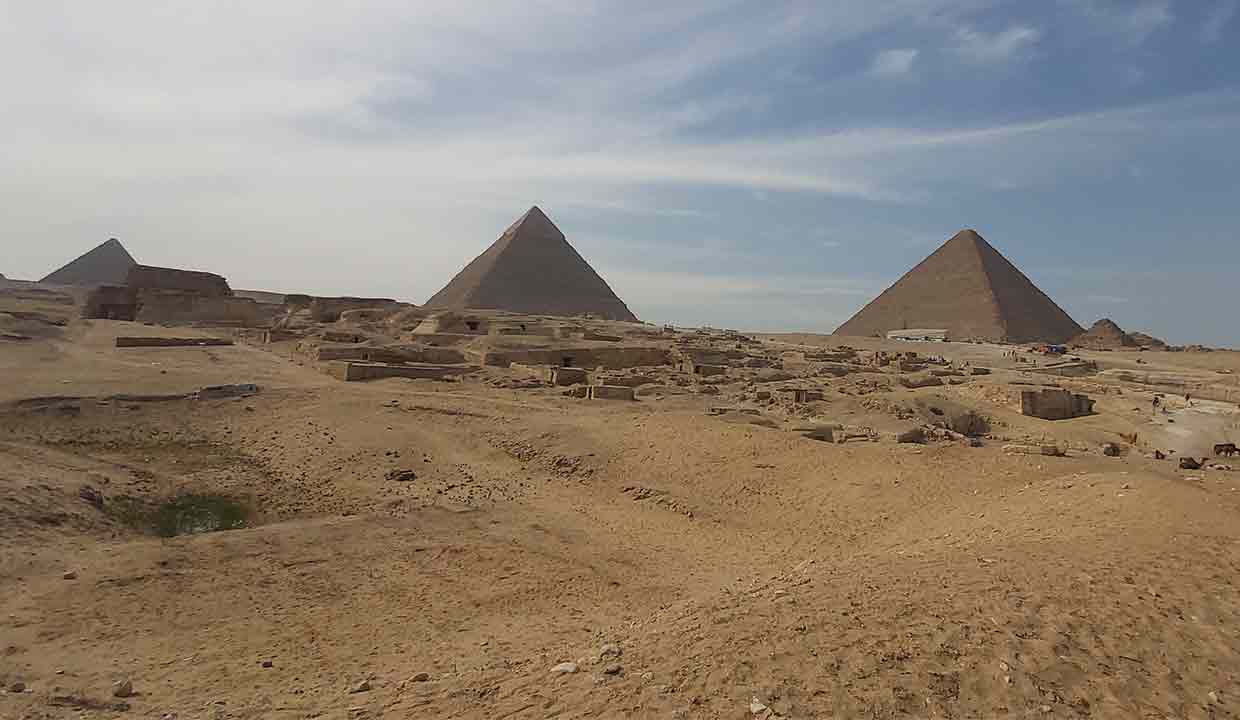Discover the Workers’ Village: not a slave camp, but a thriving community that built pyramids with pride, organization, and skill.
The ancient pyramids of Egypt, standing tall and majestic, have always been enshrouded in mystery and awe. While they are recognized as incredible feats of architecture and engineering, popular narratives for centuries erroneously posited that these grand structures were constructed through the forced labor of countless slaves. However, archaeological discoveries in recent decades have transformed our understanding of the workforce behind these monumental structures.
Discovering the Workers’ Village:
In the 1990s, an exciting archaeological find close to the Giza pyramids unearthed a workers’ village. This discovery provided a goldmine of information about the laborers who dedicated their lives to constructing the pyramids.
Contrary to the age-old image of oppressed slaves toiling under the whip, evidence from this settlement portrayed a vastly different picture. The village was not a transient camp but a well-planned community with clear indications of a settled and organized population.
A Community Well-Cared For:
The meticulous organization of the village reflected a level of care and precision. The laborers were housed in tidy rows of mud-brick houses. But perhaps even more revealing were the remnants of bakeries and large communal kitchens. Analyses of the remains found in these areas indicated that the workers were provided with a balanced diet, including meat, bread, and vegetables. The presence of fish bones and other varied food remnants further confirmed this.
It was clear that these weren’t the meals of subjugated slaves but of valued laborers. The well-fed workers were not only capable of enduring the physically demanding tasks but were also likely more efficient in their roles.
Healthcare and Well-being:
Furthermore, the proximity of the village to a nearby industrial complex where tools were manufactured and repaired suggests that the workforce was well-equipped. The discovery of skeletons in the nearby cemeteries presented evidence of medical care. Fractured bones that had been properly set, and signs of surgeries, showed a medical infrastructure aimed at ensuring the workers’ health and longevity.
Spiritual and Social Lives:
Further excavations in the workers’ village revealed small temples and communal spaces. These areas provided insights into the spiritual and social lives of the laborers. It indicated that they had the time and space for worship, relaxation, and interaction – a far cry from the life of enslaved individuals.
Organized Workforce:
Perhaps most illuminating was the evidence suggesting that the workforce was organized into distinct teams. Graffiti on some of the stones hinted at names of teams like “Friends of Khufu” or “Drunkards of Menkaure.” Such organization, camaraderie, and even humor imply a sense of community and pride in their monumental task.
Conclusion:
The discovery of the workers’ village and the adjacent industrial complex has significantly shifted the narrative around the construction of the pyramids. Rather than a tale of oppression and forced labor, the evidence paints a portrait of a well-fed, cared-for, and organized workforce that took pride in their work. It reaffirms the idea that the pyramids, in all their grandeur, are not just symbols of the pharaohs’ ambitions but also of the collective spirit, effort, and dedication of the people who built them.
